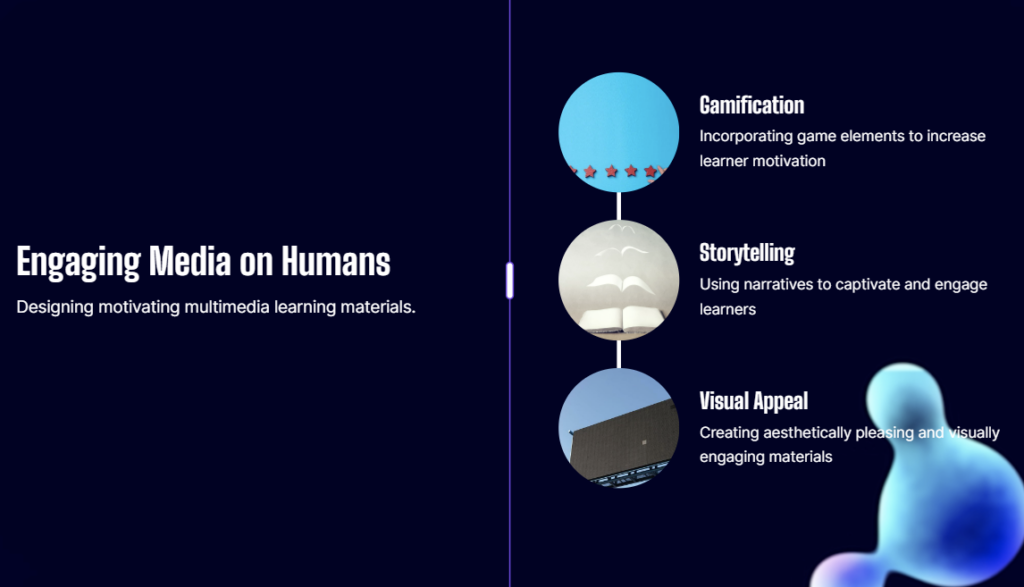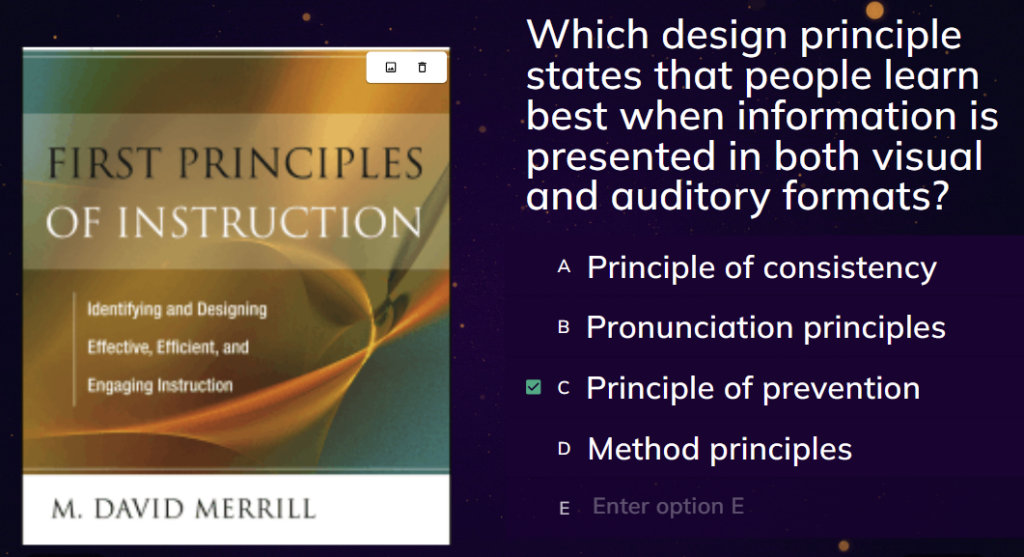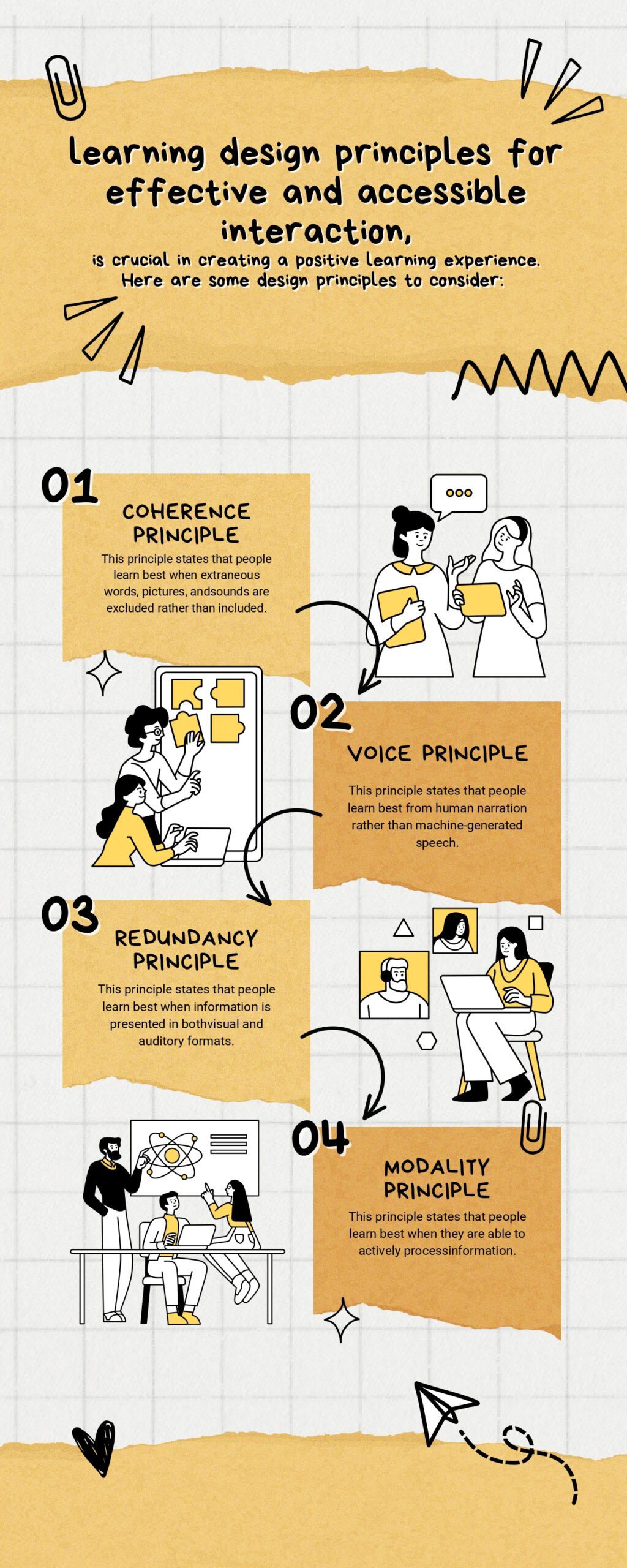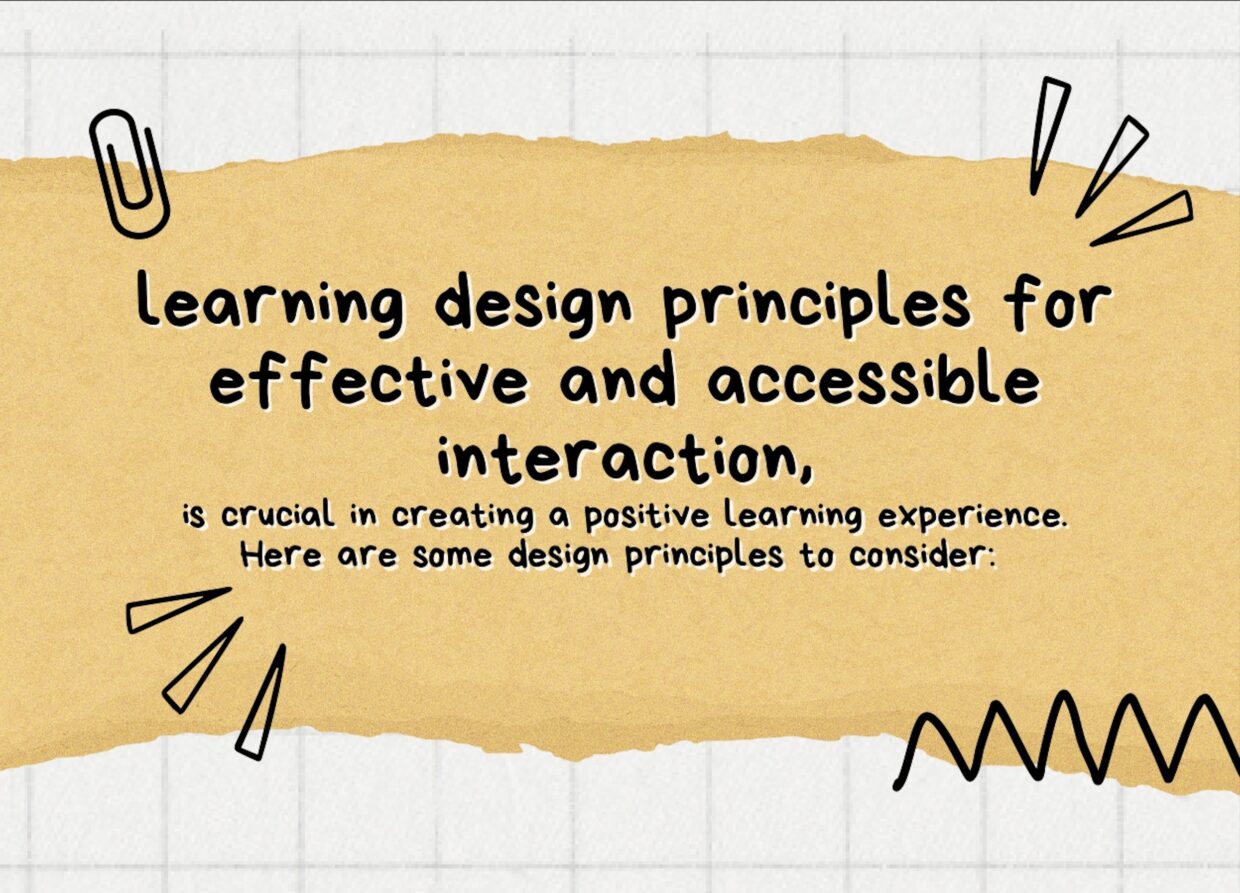EDCI 337: Module 2 Blog
Overview
I learned about the following design principles for effective and accessible multimedia:
- Coherence Principle: This principle states that people learn best when extraneous words, pictures, and sounds are excluded rather than included.
- Voice Principle: This principle states that people learn best from human narration rather than machine-generated speech.
- Redundancy Principle: This principle states that people learn best when information is presented in both visual and auditory formats.
- Modality Principle: This principle states that people learn best when they are able to actively process information.
- Accessibility Principle: This principle states that all learners, including those with disabilities, should be able to access and use multimedia learning materials.
In addition to these principles, I also learned about Universal Design for Learning (UDL) and the engagement of media on humans. UDL is a framework for designing effective and accessible learning experiences for all learners. UDL is based on the three principles of multiple means of representation, multiple means of action and expression, and multiple means of participation.

Human media engagement is a field of study that examines how people interact with media and how media influences their thoughts, feelings, and behaviours.
The Significance of Effective Multimedia Design
In today’s digital age, where information is available at our fingertips, multimedia design plays a pivotal role in making content stand out. It’s not just about aesthetics; it’s about crafting content that communicates its message clearly and resonates with the audience. Multimedia should be inclusive, ensuring that all individuals, regardless of their abilities, can access and benefit from the content.

Experience
I found design principles for multimedia, effective and accessible UDL, and human-engaging media to be very helpful. I always try to create engaging and informative multimedia learning materials but I don’t always know how to make it as effective and comprehensive as possible.
The principle of consistency has helped me focus on the essential information learners need to know and avoid including any unnecessary information that might distract or confuse them. I’ve also learned how to use images to support my text in a way that is both effective and accessible.
The Voice Principle taught me the importance of using human narration whenever possible. I was surprised to learn that human narration is more effective than machine-generated speech, even for fluent learners of the language. The principle of redundancy has helped me understand the importance of presenting information in visual and auditory formats. I learned how to create multimedia learning materials that are accessible to learners with different learning styles.
The principle of modality taught me the importance of including interactive elements in multimedia learning materials. I learned how to create quizzes, exercises, and simulations to help learners actively engage with the material.
The principle of accessibility has helped me understand the importance of designing multimedia learning materials in a way that is accessible to all learners, including those with disabilities. I learned how to provide transcriptions of videos and audio recordings, and how to use accessible fonts and colour palettes.

UDL has helped me understand that I need to provide learners with multiple means of expression, multiple means of action and expression, and multiple means of interaction. For example, I can provide learners with different ways to access information, such as through text, audio, or video. I can also offer different ways for learners to demonstrate their learning, for example by writing, speaking or creating a project.
Engaging Media on Humans helped me realize that I needed to design multimedia learning materials that were engaging and motivating for learners. I can do this by using interesting and relevant content as well as interactive elements that allow learners to actively engage with the material.

Action and Expression
The principles of representation and action and expression have been enlightening. Representation involve show information is presented, ensuring that content is not only clear but also culturally responsive and diverse.Action and expression, on the other hand, refer to the various ways learners can express what they’ve learned.By providing diverse means of expression, I’ve seen how it empowers learners to demonstrate their understanding in ways that suit their individual preferences and abilities.
Infographic
In order to prepare the infographic, I used Canva application. This application is well-equipped with multiple tools that helped me in designing an appropriate infographic related to the topic of discussion. I mainly focussed upon including the images that were related to the points that I covered in module 1. I believed that this would increase the comprehensibility of the data that I presented. The use of canva application helped me in saving time as well as effort, especially with respect to designing of the template. I was able to access appropriate template for the infographic. It made my task much easier as I only had to include the relevant data and images to make my presentation more informative and attractive.

References
Ready for a deeper dive into these concepts and ideas? Check out these resources below:
Creative Commons Licensed Workshop Curriculum | UVic Libraries Digital Scholarship Commons. (n.d.).Retrieved Sept 28, 2022, from https://oac.uvic.ca/dsc/workshops/lessonplans/
Johnson, D. (2021, February 19). Design and Layout with Canva [Mp4]. https://www.youtube.com/watch?v=g3pdyid7BjU
Levie, W & Lentz, R. Effects of Illustrations: A Review of Research (1982) ECTJ, Vol 30 No. 4, Pages 195-232
McCue, R. (2021, February 20). Introduction to Infographics with Canva & Related Multimedia LearningPrinciples [MP4]. https://www.youtube.com/watch?v=K1k3deWbw2c
Easel.ly, Crash Course in Infographics Webinar, Accessed Sept 28, 2022
Brame, C.J. (2015). Effective educational videos. Retrieved [22/09/2022] from http://cft.vanderbilt.edu/guides-sub-pages/effective-educational-videos/.
Cahill, Caitlin, How to Make Text Accessible to People with Disabilities : Caitlin Cahill, from The Geek YouNeed, Retrieved [22/09/2022]
Gernsbacher MA.(2015) Video Captions Benefit Everyone. Policy Insights Behav Brain Sci. 2015 Oct;2(1):195-202. doi: 10.1177/2372732215602130. Epub 2015 Oct 1. PMID: 28066803; PMCID: PMC5214590.
Holmes, K. (2020). Mismatch: How inclusion shapes design. MIT Press.
Inclusive Design (2018) Microsoft Design Principles
Wantuch, Michelle (2021), Designing for neurodivergent students: What we’ve learned so far – MicrosoftResearch
